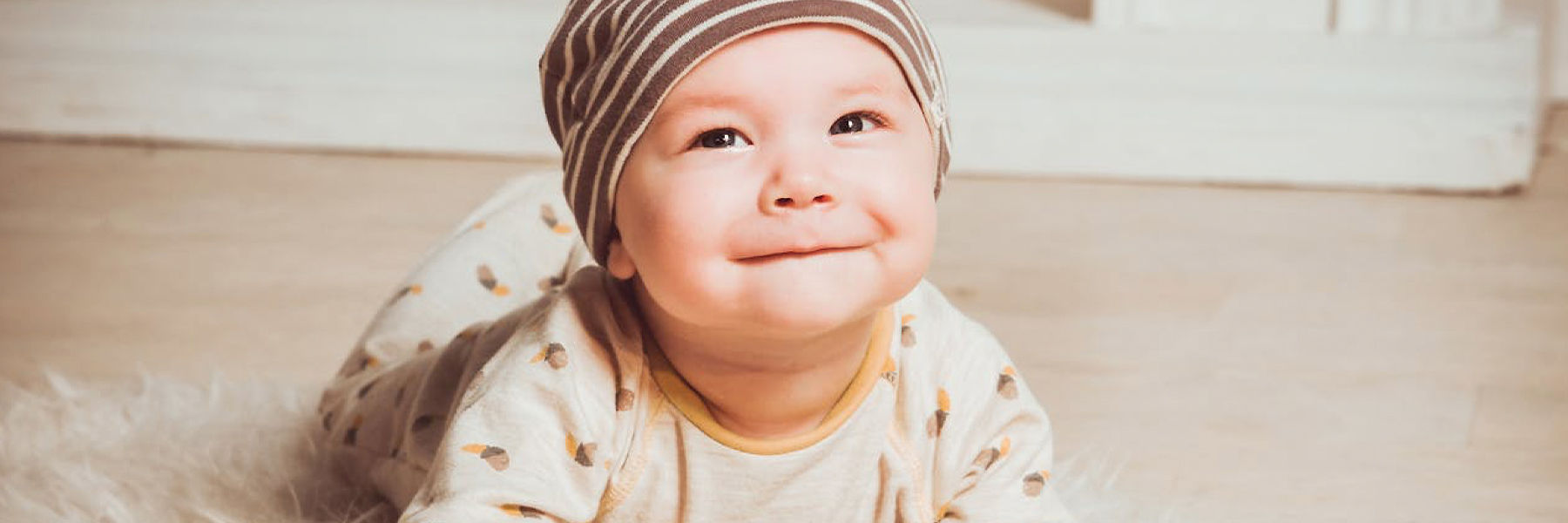Use arrow keys to navigate through the menu items. Use Tab key to navigate through the menu banners.
When Will My Baby Sit Up?

When Will My Baby Sit Up?
Get ready for an exciting milestone! Learn when your baby will sit up and how to help
Sitting up might appear effortless, but it's a significant achievement for your baby. It takes months of practice for them to achieve that first wobbly sit! However, the effort is worthwhile, as sitting up expands your baby's world and marks a crucial milestone on their journey to standing and walking.
Your baby’s sitting-up timeline
Every baby develops differently, so the following is just a guide.
-
3-4 months
In preparation for sitting, your baby is likely to lift their head while lying on their tummy and push themselves up with their arms. -
5-6 months
Most babies can start to sit with support. -
8-9 months
Most babies can sit without support and play with toys.

How can I tell if my baby is ready to sit up?
Before your baby sits up for the first time, they need to build muscle strength and coordination. You can tell your baby is strong enough to try sitting if they can control their head well and have learnt to roll over.
What are the stages of sitting up?
There are two stages in your baby’s sitting-up journey – with and without support.
1. Sitting with support
Your baby will be very wobbly while they’re learning to sit, so they will need plenty of support to help keep their balance. Try:
-
propping them up with cushions
-
letting them sit on your lap with their back against you
-
securing them safely in a supportive highchair.
2. Sitting without support
As your baby gets more confident and better at balancing, they will start to sit by themselves, keeping their legs outstretched for stability. Keep a close eye on them – you may still see the occasional topple!
Staying safe
-
Don’t practise sitting up on a bed – a rug or playmat on the floor is safer.
-
Make sure any surfaces they could fall on while practising on are soft enough to cushion them. You might want to put a duvet on the floor or cushions around the sofa.
-
Clear spaces so they don’t land on anything painful.
-
Never leave your baby unsupervised, as they could fall over and hurt themselves.
How can I help my baby sit up?
To help your baby train those little muscles and build their balance for independent sitting, try the following:
-
Tummy time: Practise daily tummy time. Lay your baby on the floor on their tummy and use a rug or play mat in case they faceplant. Tummy time helps build the neck, shoulder, arm, and back muscles.
-
Pull them up: Once your baby has good head control, lay them on their back, then gently pull them up by their arms to a sitting position.
-
Sit them on your lap: When they’re used to being pulled up, sit them upright on your lap with you holding them.
-
Place toys nearby: Once your baby can balance on their own in a sitting position (with close supervision), placing some toys in front or to the sides will encourage them to reach out and grasp them.
When should I worry about my baby not sitting?
Essential Parenting’s Helen Davies says: “Most babies will sit confidently by themselves by around nine months, but it’s usually nothing to worry about if they’re a little later. However, if your baby isn’t showing any signs of trying to sit up by around nine months, or if they find controlling their head or rolling over difficult, talk to your doctor or health visitor. In the unlikely case of a problem, getting advice early can help.”
One mum’s experience
Gemma’s first child was quick to sit up, so worries set in when her second took longer: "Freya could sit up by herself at seven months, but Charlie was a bit slower. I was concerned but my doctor reassured me and suggested things to try. We could soon see that while Charlie was a little late, he was definitely heading in the right direction and practising more helped.”
Gemma’s tips:
-
Put toys just out of reach during tummy time or when you’re holding your baby on your lap. They will have to work those little muscles extra hard to get them.
-
Use a nursing pillow or firm cushions to prop your baby up, making sure they have a soft landing area and you’re closely supervising.
-
To make it fun for your baby, play with them and sing to them while you practise sitting up together.
Your baby’s journey to that simple but momentous first unsupported sit may have its bumps, but with you to help and encourage them, they’ll soon be on their way!
Help & Customer service
- Help Centre
- How to shop
- Product recalls
Payment Methodslist with 8 items
- Asda Group of Companies
- Modern Slavery Statement
- Electrical Waste Recycling
- Terms & Conditions
- Customer Review Policy
- Privacy Centre
- Cookie Settings
- Accessibility
© ASDA 2025